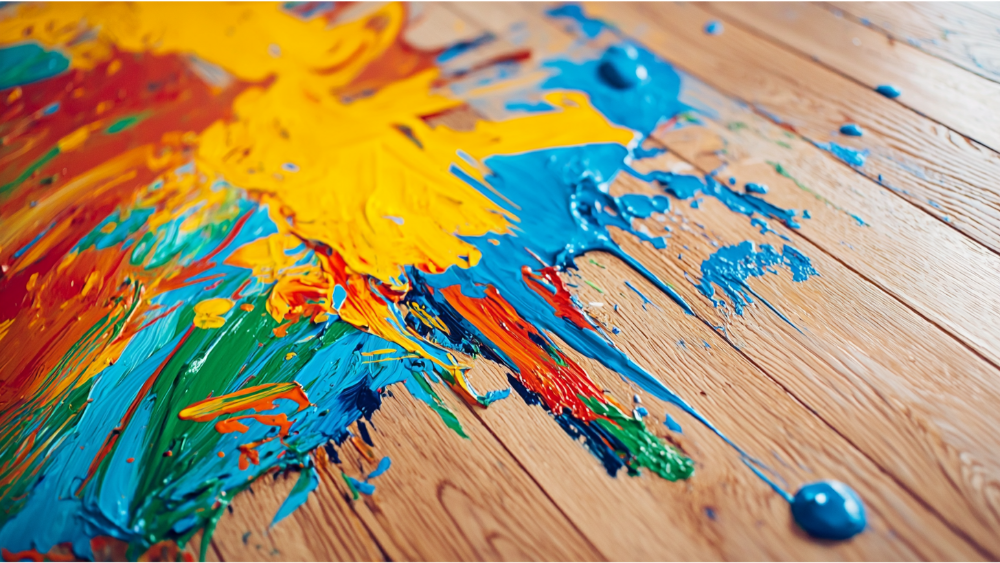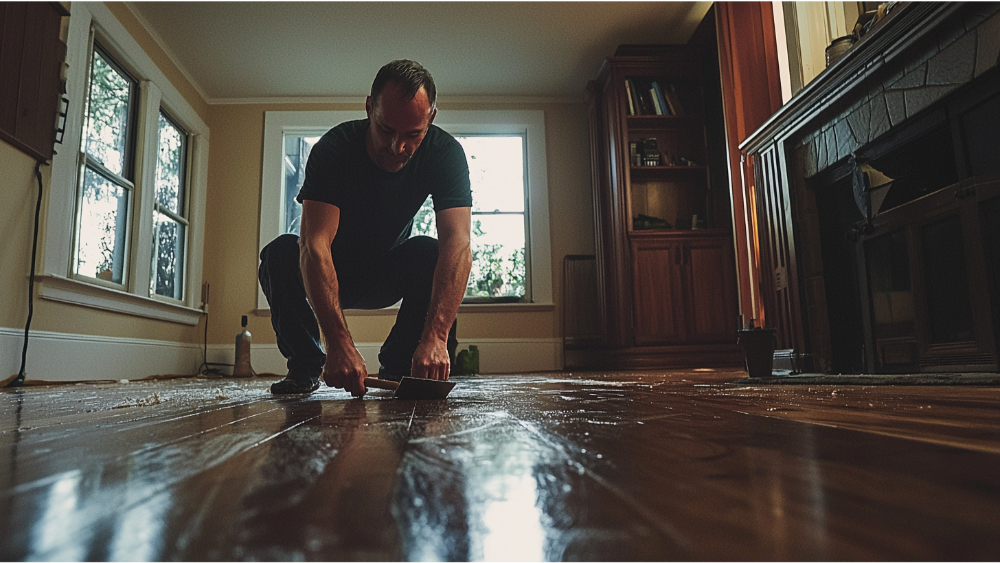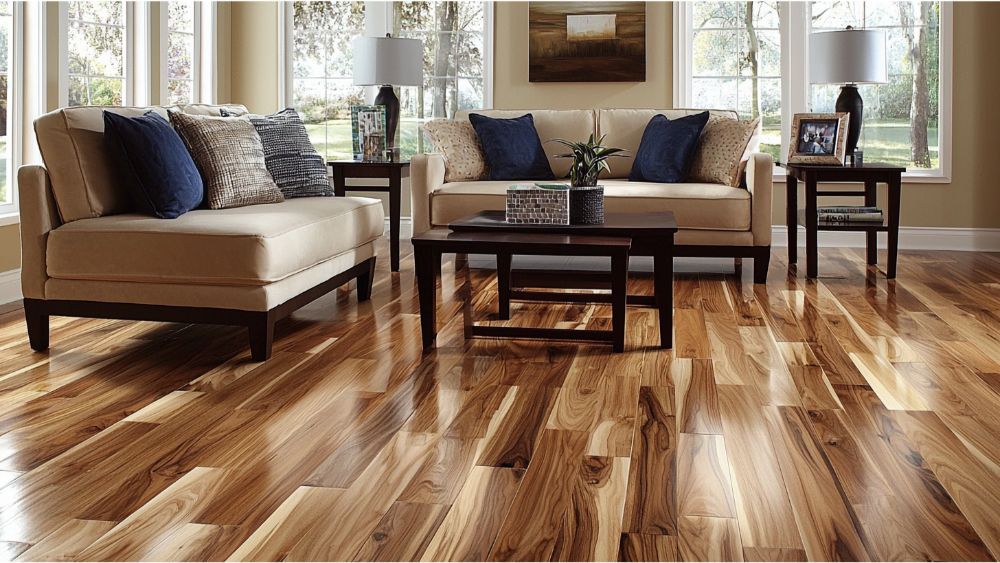Whether you’re tackling a full-room renovation or just giving the walls a quick refresh, spilled paint happens. And when it lands on your beautiful hardwood floors, it can be more than just an eyesore—it can feel like a costly mistake. But before you panic, take a deep breath. The solution might be easier (and safer for your floors) than you think.
With the right approach and a little elbow grease, you can remove the paint without damaging your wood’s finish. In this guide, we’ll walk you through safe, effective techniques to get rid of wet paint, dried paint, paint stains, and even stubborn latex or oil-based splatters. We’ll also cover what to avoid, when to call in the pros, and how to protect your floors for future projects.
Understanding Your Hardwood Floors Before You Start
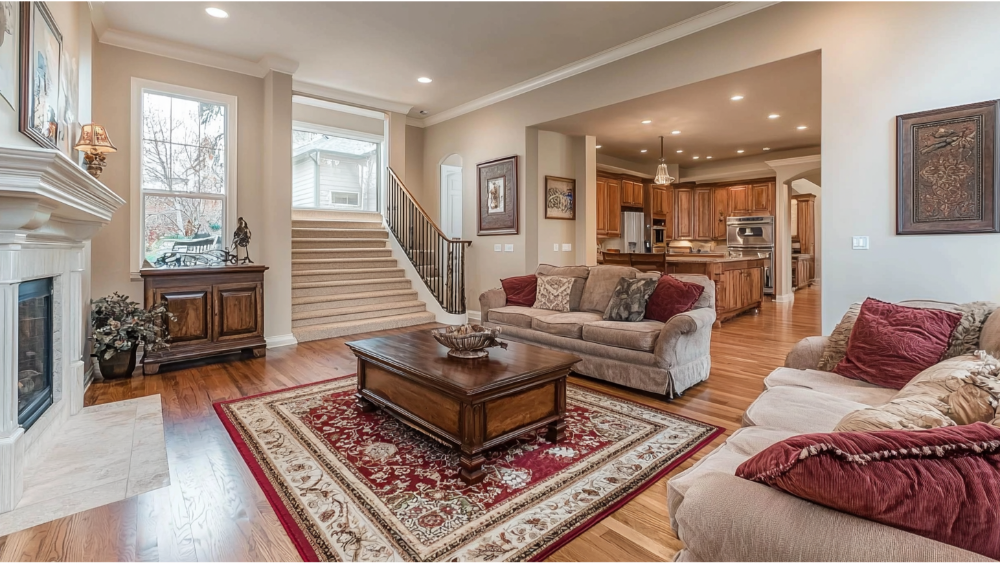
Identify Your Floor’s Finish (Polyurethane, Wax, or Varnish)
Not all hardwood floors are created equal, and how you treat them depends on the finish. Most modern floors have a polyurethane coating that protects the wood from moisture and mild abrasions. Older floors may have varnish or wax finishes, which are more sensitive to solvents and aggressive cleaning methods.
Before using any products, do a simple test: drop a little clean water on an area of the floor. If it beads up, you likely have a polyurethane finish. If it soaks in, your floor probably has a wax or varnish finish that will require a gentler approach.
Know the Type of Paint You're Dealing With (Latex, Oil-Based, or Acrylic)
Is the paint on your floor latex, acrylic, or oil-based? Each behaves differently and may require a unique removal technique. Latex paint—often used for walls—is water-based and typically easier to lift from hardwood surfaces. Oil-based paint, on the other hand, can bond more stubbornly to the wood grain and may need a stronger paint thinner or paint stripper to break the bond.
Always try to identify the paint type before you begin. If you’re unsure, look at the original paint can, or test a small area using water or rubbing alcohol—just be sure to test in an inconspicuous area first.
How to Get Paint Off Hardwood Floors – Method by Method
Method 1 – Use Dishwashing Liquid and Warm Water on Wet Paint
If you act quickly, you can usually lift it off with just dishwashing soap and warm water.
Fill a small bowl with warm water and a few drops of dishwashing liquid or dish soap.
Dip a clean cloth or damp rag into the soapy mixture.
Blot the spill gently—avoid rubbing, as this can smear the paint further into the wood.
If needed, use a plastic putty knife or cotton ball to nudge the paint away from grooves or corners.
Wipe down the area with clean water and a dry cloth to remove any excess moisture.
This approach is safe for all finishes and is especially effective for latex paint spills.
Method 2 – Remove Dried Paint with Isopropyl Alcohol and Lemon Juice
If the paint has dried, don’t worry—there are still gentle, effective options.
Isopropyl alcohol is excellent for latex paint, especially when combined with a little lemon juice. Here’s how to use it:
Dampen a cotton ball, damp cloth, or clean rag with isopropyl alcohol.
Press it onto the paint for 30 seconds to soften the paint.
Once the paint begins to lift, use a plastic putty knife or a soft putty knife to gently scrape away the softened paint.
Use a paper towel or damp rag to blot up the loosened paint.
Rinse the area with clean water and dry thoroughly.
If the alcohol isn’t quite enough, adding lemon juice can provide extra acidity to help break the paint bond—just don’t use too much pressure when scrubbing.
Method 3 – Try Commercial Paint Strippers or Thinners (With Caution)
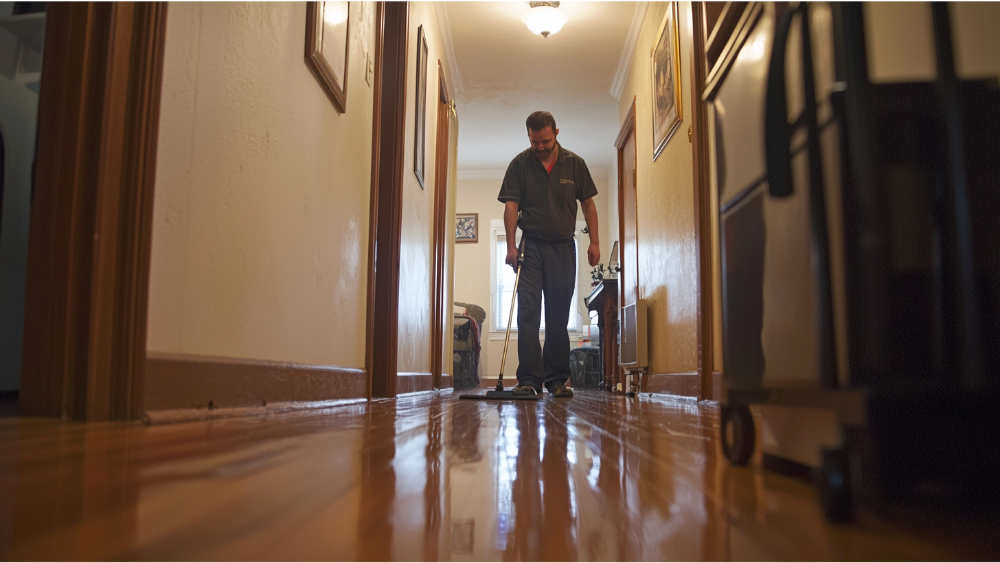
When you’re dealing with oil-based paint or thicker paint stains, it’s time to bring out the big guns—just carefully.
Paint stripper or paint thinner can dissolve paint quickly, but they’re potent. Only use products labeled safe for hardwood floors and always follow the product label instructions. Also, ensure the area is well ventilated and stay far away from open flames or heat sources.
Apply a small amount of mineral spirits, paint thinner, or paint remover to a damp cloth or cotton ball.
Blot the paint—don’t scrub.
Let it sit for 1–2 minutes until the softened paint starts to lift.
Use a plastic putty knife or cloth to carefully scrape off the remaining paint.
Follow up with a clean cloth and warm water to remove residue.
Use this method only after other, gentler options have failed, and always test in an inconspicuous area.
Method 4 – Heat Tools: Hair Dryer or Heat Gun for Stubborn Spots
For especially stubborn, dried-on paint spots—like oil-based paint that’s settled into the wood grain—heat can help loosen the bond.
A handheld hair dryer is safer than a professional-grade heat gun for most DIYers. Heat the area on low to medium for about 30 seconds, then try carefully scraping with a plastic putty knife.
Never use heat on waxed floors, and be cautious not to overheat the surface—excessive heat can warp boards or bubble the finish.
Looking at major damage? Our team offers full-service flooring removal and replacement.
Method 5 – Scrape with Care and Finish with a Gentle Cleaning Solution
Sometimes, the best method is the simplest: carefully scraping with a tool and then cleaning. For this:
Use a plastic putty knife or similar tool and gently scrape the paint.
Pair with soap and water or a homemade cleaning solution (such as vinegar and water) to soften and lift paint.
Follow with a clean rag or damp cloth to clean any remaining paint residue.
This method takes patience, but with enough elbow grease, you can get up all the paint safely.
When to Call the Pros
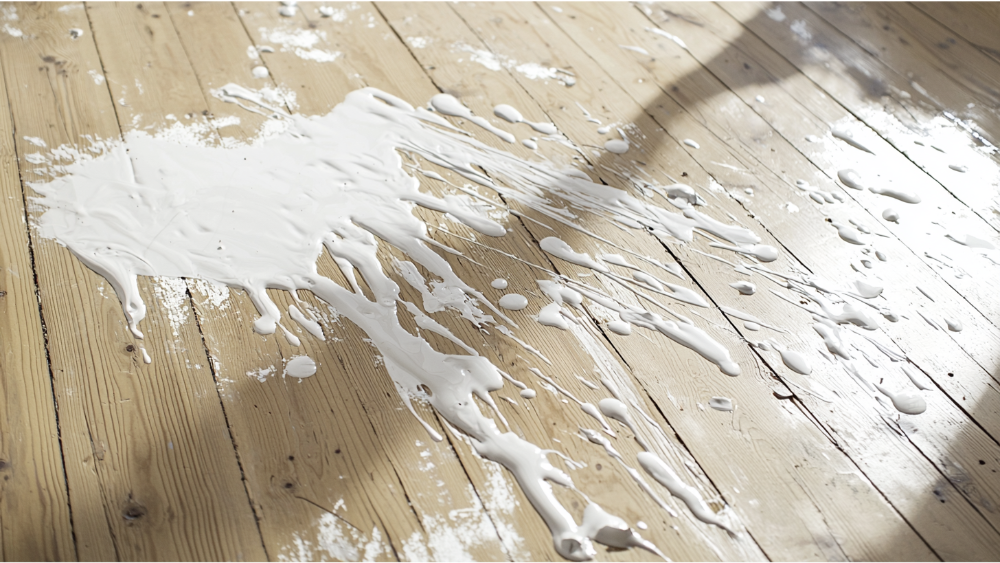
How to Know You’re Doing More Harm Than Good
If you’ve tried multiple methods and the paint still won’t budge—or if you notice dulling, scratching, or hazing of the finish—it’s time to bring in help. You might also see paint bleeding into the wood grain, which is tough to fix without sanding.
What a Professional Flooring Team Can Do
We can:
Gently sand only the affected area and re-blend the finish
Spot refinish to restore uniformity and sheen
Provide complete hardwood refinishing for heavily damaged areas
Our expert team can handle any hardwood repair or restoration job →
Post-Cleanup Tips: How to Restore and Protect Your Floors
Polish and Buff After Paint Removal
After using solvents or scraping, your floor may lose a bit of its shine. A gentle buff and polish with the right product can bring it back. Just be sure the surface is clean and dry—any excess moisture can affect adhesion.
Should You Recoat or Refinish?
If the area looks noticeably different from the surrounding floor, recoating might be the way to go. It’s quicker and cheaper than full refinishing, especially for smaller affected zones.
Prevention Tips – How to Avoid Spilled Paint in the Future
Use the Right Tools and Prep Like a Pro
Use heavy-duty canvas drop cloths (not plastic) that stay in place
Secure edges with painter’s tape
Cover thresholds and vents with painter’s plastic or cardboard
Keep Cleanup Essentials on Hand
Always have a cleanup kit ready with:
Dish soap, water, and soft cloths
Plastic putty knife
Rubbing alcohol or vinegar
Microfiber cloths and paper towels
These tools can help you react fast to spilled paint before it becomes a major issue.
Frequently Asked How to Get Paint Off Hardwood Floors Questions
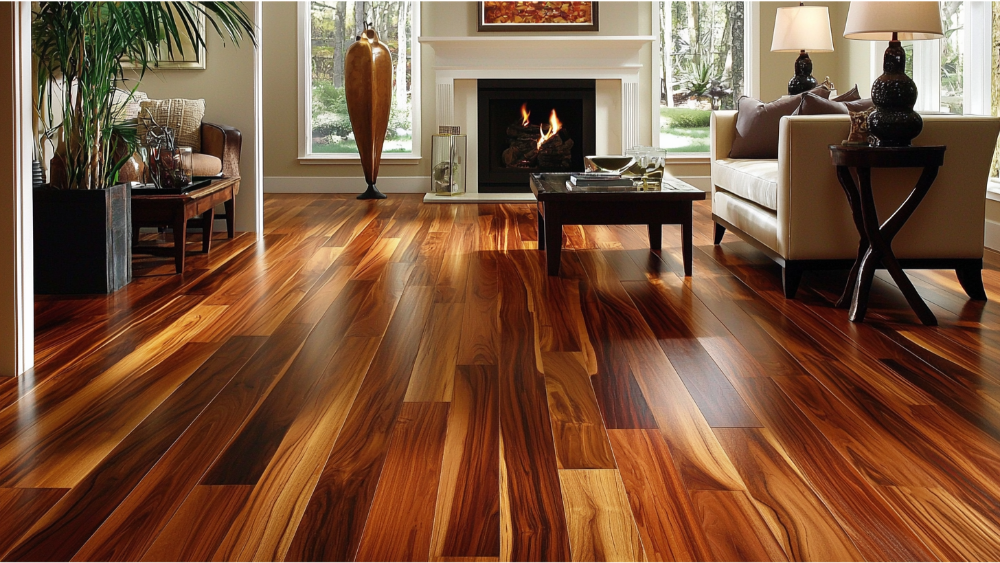
Can I use acetone or nail polish remover on hardwood floors?
We don’t recommend it. Acetone is powerful—but it can damage the finish and dry out the wood. Stick to gentler options like isopropyl alcohol or mineral spirits.
What’s the safest method for removing dried latex paint?
Rubbing alcohol combined with lemon juice is one of the safest and most effective DIY options for latex paint. It softens the paint without damaging the finish—just don’t use too much pressure.
How much does it cost to remove paint professionally?
Prices vary by floor type and damage, but the beginner estimated cost for professional paint removal in Seattle starts around $150. Full refinishing may cost $5–$7 per square foot.
Final Thoughts: Paint on Hardwood Isn’t the End
Need help removing paint from your hardwood floors? Schedule your free in-home consultation with Best Floor Coverings today.


